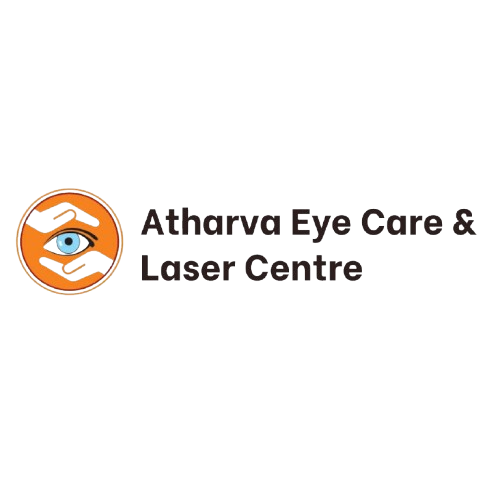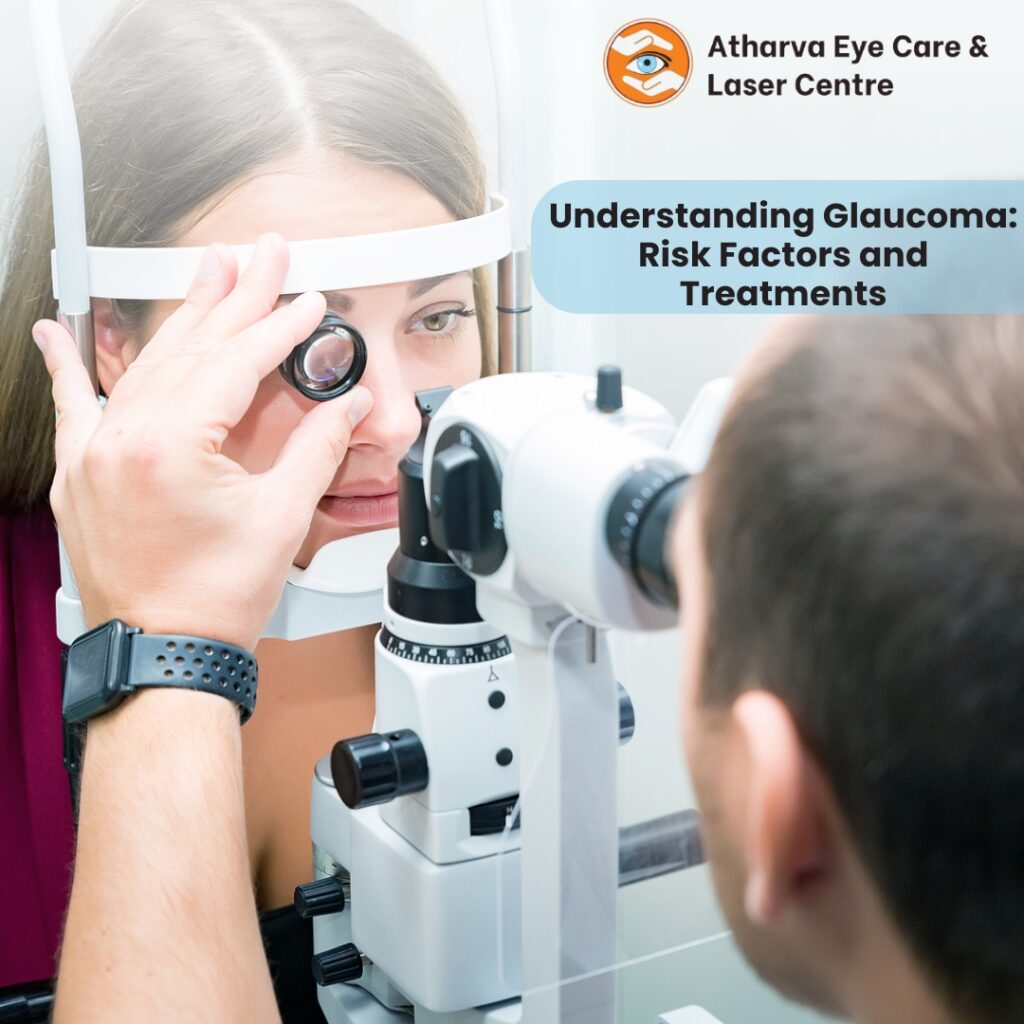- May 28, 2025
- By: atharvaeyeclinic.com
- No Comments
Understanding Glaucoma: Risk Factors and Treatments
Glaucoma is a group of eye conditions that damage the optic nerve, often caused by abnormally high pressure in the eye. It is one of the leading causes of irreversible blindness worldwide. What makes glaucoma especially concerning is that it typically progresses silently, without noticeable symptoms in the early stages. This makes early detection and treatment crucial in preserving vision.
At Atharva Eye Care & Laser Centre, we emphasize the importance of awareness, early diagnosis, and advanced treatment options to manage glaucoma effectively. In this guide, we’ll help you understand what glaucoma is, its risk factors, and the most effective treatments available.
What is Glaucoma?
Glaucoma is a category of ocular disorders that harm the optic nerve—the vital conduit connecting your eyes to your brain. Although glaucoma can also develop with normal eye pressure, the damage is usually related to increased intraocular pressure (IOP). Without quick treatment, the harm aggravates over time and could cause irreversible vision loss
There are several types of glaucoma, with the most common being:
- Primary Open-Angle Glaucoma
The most prevalent form, developing slowly and painlessly. Peripheral (side) vision is usually affected first. - Angle-Closure Glaucoma
A sudden increase in eye pressure caused by a blocked drainage angle. This is a medical emergency that needs immediate attention. - Normal-Tension Glaucoma
Occurs even when eye pressure is within the normal range. The optic nerve is still damaged, possibly due to poor blood flow. - Secondary Glaucoma
Caused by an underlying condition like diabetes, eye injury, inflammation, or medication side effects. - Congenital Glaucoma
Present at birth and typically caused by improper development of the eye’s drainage channels.
Common Symptoms of Glaucoma
Glaucoma is often called the “silent thief of sight” because early stages rarely cause pain or noticeable vision loss. However, as the condition progresses, Glaucoma symptoms may include:
- Gradual loss of peripheral vision
- Tunnel vision in advanced stages
- Eye pain or pressure (especially in angle-closure glaucoma)
- Headaches and blurred vision
- Halos around lights
- Nausea or vomiting (in acute glaucoma cases)
Regular eye exams are crucial, especially if you’re at higher risk.
Risk Factors for Glaucoma
Several factors can increase your risk of developing glaucoma. Understanding these can help you take preventive steps or seek early treatment.
- Age
People over 40 are at increased risk, and the likelihood continues to rise with age.
- Family History
A family history of glaucoma significantly increases your risk, particularly for open-angle glaucoma.
- High Intraocular Pressure
Elevated eye pressure is a major risk factor, although glaucoma can also occur with normal pressure.
- Ethnicity
People of African, Asian, or Hispanic descent have a higher risk of developing various forms of glaucoma.
- Medical Conditions
Diabetes, hypertension, and heart disease can increase the risk of glaucoma.
- Eye Injuries or Surgeries
Past trauma or surgical complications may lead to secondary glaucoma.
- Prolonged Steroid Use
Extended use of corticosteroids, especially eye drops, may raise eye pressure and lead to glaucoma.
How is Glaucoma Diagnosed?
At Atharva Eye Care & Laser Centre, our glaucoma evaluation includes:
- Tonometry – Measures intraocular pressure.
- Ophthalmoscopy – Examines the shape and color of the optic nerve.
- Perimetry (Visual Field Test) – Assesses peripheral vision loss.
- Gonioscopy – Evaluates the angle where the iris meets the cornea.
- Pachymetry – Measures corneal thickness.
- OCT (Optical Coherence Tomography) – Provides detailed images of the optic nerve and retinal layers.
Regular eye exams are essential for early detection, especially if you’re in a high-risk group.
Treatment Options for Glaucoma
While there is no cure for glaucoma, effective treatments can halt or slow its progression and protect your vision. The right treatment depends on the type and severity of glaucoma.
- Medications
Prescription eye drops are the first line of defense. They help lower eye pressure by reducing fluid production or improving drainage.
- Laser Therapy
Laser procedures such as Selective Laser Trabeculoplasty (SLT) or Laser Peripheral Iridotomy can improve fluid drainage and reduce pressure.
- Surgical Options
When medications and lasers aren’t enough, surgery may be necessary. Common procedures include:
- Trabeculectomy – Creates a new drainage path.
- Glaucoma Drainage Implants – Tubes placed to divert fluid and lower pressure.
- Minimally Invasive Glaucoma Surgery (MIGS) – Offers quicker recovery and fewer complications.
Glaucoma Management at Atharva Eye Clinic
At Atharva Eye Care & Laser Centre, we provide personalized glaucoma care with advanced diagnostic tools and a patient-centered approach. Our experienced eye specialists guide each patient through diagnosis, treatment planning, and ongoing management.
We offer:
- Comprehensive glaucoma screening
- Individualized treatment plans
- Follow-up care and progress monitoring
- Counseling for medication adherence and lifestyle support
Book Your Consultation Today!
Glaucoma progresses silently and irreversibly, but early detection and treatment can save your sight. Regular eye exams, awareness of risk factors, and timely intervention are your best defense.
If you or a loved one is at risk for glaucoma or experiencing symptoms, don’t wait. Schedule a consultation at Atharva Eye Care & Laser Centre today and take proactive steps toward lifelong vision health.

